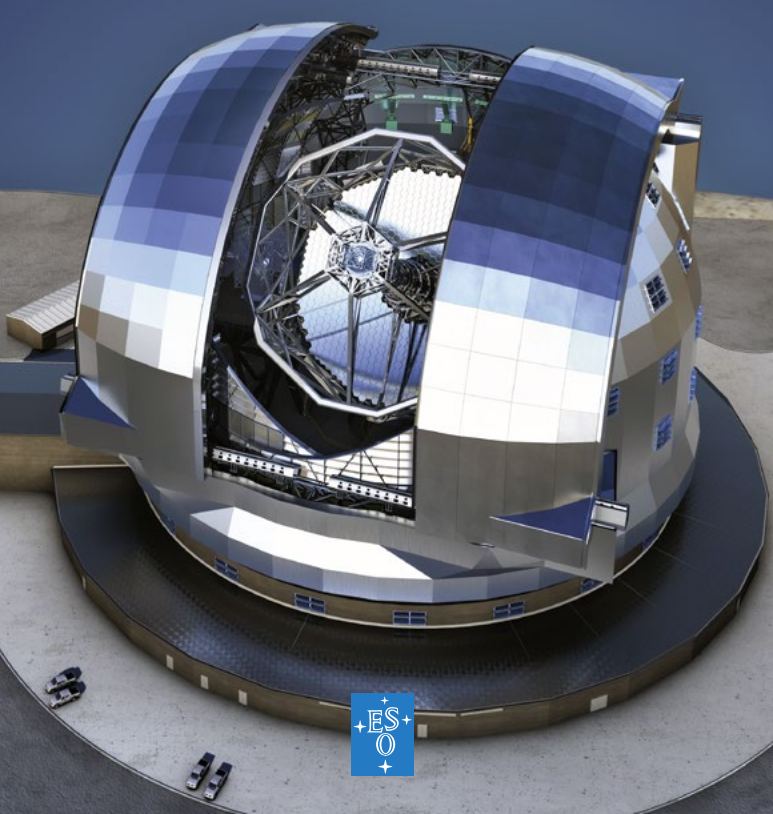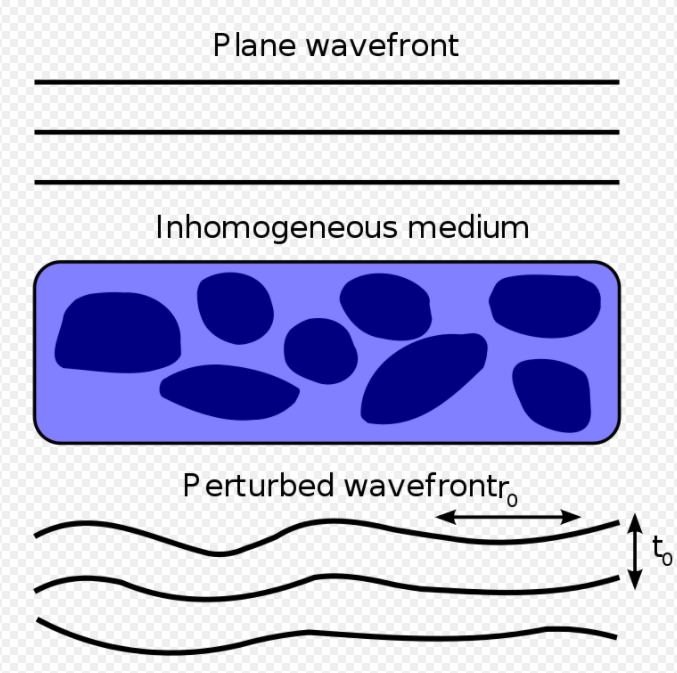Everyone loves lasers. And the only thing better than a bunch of lasers is a bunch of lasers on one of the world’s (soon to be) largest telescopes, the E-ELT. Well, maybe a bunch of lasers on a time-travelling T. Rex that appears in your observatory and demands to know the locations and trajectories of incoming asteroids. That might be better. For the dinosaurs; not for us.
First light for the European Extremely Large Telescope (E-ELT) is still years away. When it opens its powerful and sensitive eye, it’ll be the world’s largest optical/infrared extremely large telescope. Its primary mirror will be a whopping 39.3-metres (130 ft) in diameter. Of course, the mirror is not a single monolithic chunk of glass; it’s segmented into 798 hexagonal elements that all work together.
But all that observing power is virtually useless, or at least severely limited, without a bouquet of lasers to help it do its thing. And what a bouquet it will have.

Modern telescopes like the E-ELT use lasers as guide stars in their adaptive optics systems. Without them, they would be severely limited.
We’re accustomed to viewing super sharp and detailed astronomical images on our computer screens. The Hubble Space Telescope is especially responsible for this, and a whole generation has grown up with access to these images. But not every telescope can be in space. The largest, most powerful ones are here on Earth.
To the naked eye, stars twinkle. That’s great. But that twinkling is caused by disturbances in the atmosphere due to wind and temperature which distorts astronomical seeing. To deal with that, the E-ELT and other terrestrial telescopes user laser guide stars and adaptive optics (AO) systems.

The light coming from a distant star is a plane wave. For a space telescope like Hubble, it just needs to focus that plane wave onto its detector. But for a ground-based telescope like the E-ELT, the plane wave is distorted by the atmosphere. The laser guide stars and the AO system allow the telescope to sense those atmospheric distortions and respond to them to keep the plane wave clear.
The lasers create an artificial star in the sky, which the AO system can observe. By observing that artificial star, the AO system can sense how the star’s plane wave is distorted by atmospheric disturbances and give the telescope the info it needs to correct for it with its deformable mirror. And it corrects itself in real-time.
Space telescopes like the Hubble don’t have to contend with the atmosphere. That’s one reason why the Hubble produces such fantastic images, and how it was able to bring images of nebulae and other gorgeous, distant objects, into mainstream culture.
But the E-ELT does. And its AO system and laser guide stars will actually allow it to surpass Hubble’s image quality. In fact, the European Southern Observatory (ESO), the builders of the E-ELT, say that their ‘scope will produce images that are 16 times sharper than the Hubble. 16 times! To achieve that, it gathers more than 100 million times more light than the human eye and has 256 times as much light-gathering area as the Hubble.
What will it do with all that power? A lot.
One of the most exciting things about the E-ELT will be the study of exoplanets. It’ll be able to detect distant Earth-size planets due to indirect observations, like measuring the planet’s wobble. But it may also be able to take direct images of larger planets and even help characterize their atmospheres. It will also be able to peer into the dusty regions in young solar systems and watch as planets form, and even detect water and organic material in those systems.

It’ll also boost our knowledge of the earliest stars, galaxies, and black holes. Telescopes like the Hubble have contributed a lot to our knowledge of those subjects, and the E-ELT promises another giant leap in understanding. The telescope might even be able to measure the expansion of the Universe itself, something that is proving to be very difficult to nail down.
Those are just a couple highlights of the E-ELT’s science potential. We know from experience that there are always surprises, too.
If we think we came of age during a time of unprecedented access to distant objects in the Universe, and a time of ground-breaking discoveries, just wait until the E-ELT gets going.
We may finally be able to let the Hubble retire gracefully.
More:
- Image Release: A Sharp Eye on the Sky
- ESO: ESO’s Extremely Large Telescope
- Universe Today: An Extremely Large Hole has Been Dug for the Extremely Large Telescope

